Leshy: Master Of Forest And Wildlife In Slavic Beliefs
A. Sutherland - AncientPages.com - A forest is an exceptional place where the passage of time ceases to have meaning. It simply does not exist. Each forest has its guard. In Slavic mythology, it is a creature goat-footed woodland sprite known as Leshy.
Home of the Leshy. Fairy Forest at Sunset by Ivan Bilibin, 1906. Image credit: Ivan Bilibin - Public Domain
According to the early Slavic people, especially those who lived in heavily forested areas, Leshy looked like a person, but his appearance was described differently. He was often a masculine and mortal humanoid creature that could punish for killing an animal from his herd without permission.
He was the most powerful ruler of the forest and wildlife. He ruled over success, hunting, and happiness, cared for pets, and helped the poor.
All plants, fruits, and animals in the forest belonged to him, and Leshy drew its power from the surrounding trees; a strong forest had a guard with much more power than the weaker one.
Many Slavic tales mention forest wanderers, who encountered Leshy, and the course of this meeting often depended on how much a person had on his conscience.
He was depicted in human form or dressed in animal skins, and a deer and a wolf represented his symbolic animal. However, as some say, this absolute master of the forest is an earthly materialization of Bog Veles himself.
 WITH cover of Magazine’s «Leshy» № 1-1906. Image credit: Leshy - Public Domain
WITH cover of Magazine’s «Leshy» № 1-1906. Image credit: Leshy - Public Domain
Some believed that Leshy was an earthly materialization of Veles, a god of cattle and wildlife. Meanwhile, others considered Leshy a servant of Veles.
He was often hostile towards people and could scare them his laughing or sending wild animals or confuse a man in the forest so much that he could not find a way back. Besides getting angry, Leshy could send predators upon domestic cattle and even kidnap a child.
If a person could find a way to communicate with Leshy in the forest, Leshy would show that person the "hidden paths" of the forest, leading that person through the woods in the shortest amount of time. Our ancestors trusted Leshy and would even leave small children under his care during harvest.
A child was often left near the field and by the entrance to the forest. Leshy was asked to watch over the child; parents could work in the field to collect the harvest. Leshy would not only protect the child from wild animals but could also send animals and other spirits of the forest to protect that child from people with ill intent and dark spirits." 1
Leshy could easily change its size and height, but he was seldom seen, though many heard his powerful laughing, whistling, or singing.
When he was occasionally spotted, he was quickly recognized because he appeared to be a very tall man with an unnaturally white face, whose hair resembled pine needles. In contrast, his skin had a bark-like appearance. His right ear, eyebrows, and eyelashes were missing; his head was somewhat pointed.
For our forefathers, the forest was almost a sacred sphere. Perhaps for many of us, this special place is still holy even today because its history is much longer than human history.
Updated on August 4, 2022
Written by – A. Sutherland - AncientPages.com Senior Staff Writer
Copyright © AncientPages.com All rights reserved. This material may not be published, broadcast, rewritten or redistributed in whole or part without the express written permission of AncientPages.com
Expand for referencesReferences:
- Kushnir, D. Creatures of Slavic Myth
More From Ancient Pages
-
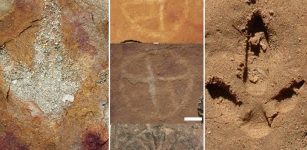 Intriguing Collection Of Petroglyphs And Dinosaur Footprints Found At The Serrote do Letreiro Site, Brazil
Archaeology | Mar 20, 2024
Intriguing Collection Of Petroglyphs And Dinosaur Footprints Found At The Serrote do Letreiro Site, Brazil
Archaeology | Mar 20, 2024 -
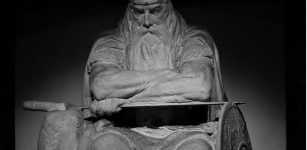 Legend Of Sleeping Hero Holger Danske: Viking Warrior Who Never Died
Featured Stories | May 8, 2016
Legend Of Sleeping Hero Holger Danske: Viking Warrior Who Never Died
Featured Stories | May 8, 2016 -
 Unique Study Of Skeletal Remains Reveals Grave Health Of Australian Pioneer Settlers
Archaeology | Apr 7, 2022
Unique Study Of Skeletal Remains Reveals Grave Health Of Australian Pioneer Settlers
Archaeology | Apr 7, 2022 -
 1.2-Million-Year-Old Obsidian Axe Made By Unknown Human Species Discovered In Ethiopia
Archaeology | Jan 25, 2023
1.2-Million-Year-Old Obsidian Axe Made By Unknown Human Species Discovered In Ethiopia
Archaeology | Jan 25, 2023 -
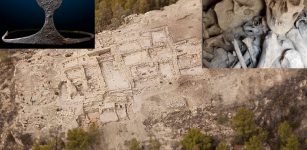 El Argar Civilization: Bronze Age Palace And Grave Goods Unearthed In Spain’s La Almoloya
Archaeology | Oct 15, 2014
El Argar Civilization: Bronze Age Palace And Grave Goods Unearthed In Spain’s La Almoloya
Archaeology | Oct 15, 2014 -
 The Untold Story Of The Great Sphinx – One Of The Greatest – Part 1
Featured Stories | Aug 9, 2019
The Untold Story Of The Great Sphinx – One Of The Greatest – Part 1
Featured Stories | Aug 9, 2019 -
 Bandelier National Monument: Unusual Ancient Ruins Of Pueblo People In The Southwest
Civilizations | Jun 30, 2016
Bandelier National Monument: Unusual Ancient Ruins Of Pueblo People In The Southwest
Civilizations | Jun 30, 2016 -
 Biblical City Of Tarsus: Excavations Reveal Its Secrets From Paul the Apostle’s Times
Archaeology | Jan 4, 2016
Biblical City Of Tarsus: Excavations Reveal Its Secrets From Paul the Apostle’s Times
Archaeology | Jan 4, 2016 -
 Were Mysterious Giant Ancient Mustatils In Saudi Arabia Used For Ritual Purposes?
Archaeology | Mar 16, 2023
Were Mysterious Giant Ancient Mustatils In Saudi Arabia Used For Ritual Purposes?
Archaeology | Mar 16, 2023 -
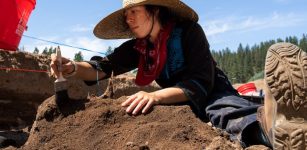 6,000-Year-Old Earth Ovens Discovered In Washington State
Archaeology | Jun 21, 2023
6,000-Year-Old Earth Ovens Discovered In Washington State
Archaeology | Jun 21, 2023 -
 10 Norse Gods Who Vikings Gained Strength From
Featured Stories | May 14, 2018
10 Norse Gods Who Vikings Gained Strength From
Featured Stories | May 14, 2018 -
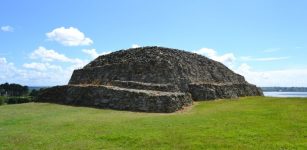 Cairn de Barnenez: Europe’s Largest Megalithic Mausoleum Is One Of The World’s Oldest Man-Made Structures
Featured Stories | Nov 1, 2018
Cairn de Barnenez: Europe’s Largest Megalithic Mausoleum Is One Of The World’s Oldest Man-Made Structures
Featured Stories | Nov 1, 2018 -
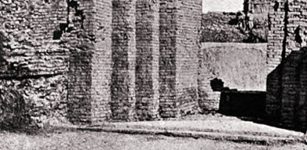 Sumerian City Of Girsu: Political, Religious Center With Large Archive Of Thousands Of Cuneiform Tablets
Civilizations | Jul 21, 2023
Sumerian City Of Girsu: Political, Religious Center With Large Archive Of Thousands Of Cuneiform Tablets
Civilizations | Jul 21, 2023 -
 What Does The Brain Of The Homo Erectus Fossil With The Lowest Cranial Capacity Tell About Evolution?
Archaeology | Mar 2, 2023
What Does The Brain Of The Homo Erectus Fossil With The Lowest Cranial Capacity Tell About Evolution?
Archaeology | Mar 2, 2023 -
 Drones Find Evidence Roman Siege Of Masada Lasted Much Shorter Than Previously Thought
Archaeology | Sep 6, 2024
Drones Find Evidence Roman Siege Of Masada Lasted Much Shorter Than Previously Thought
Archaeology | Sep 6, 2024 -
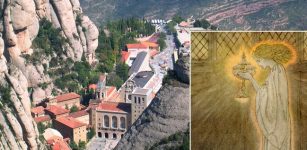 Centuries-Old Hunt For Vanished Treasures
Artifacts | Nov 8, 2018
Centuries-Old Hunt For Vanished Treasures
Artifacts | Nov 8, 2018 -
 Draken Harald Hårfagre – World’s Largest Viking Ship On Its Way To U.S And Canada
News | Apr 27, 2016
Draken Harald Hårfagre – World’s Largest Viking Ship On Its Way To U.S And Canada
News | Apr 27, 2016 -
 Caribbean Cannibalism Theory – Debunked By Researchers
Archaeology | Apr 16, 2021
Caribbean Cannibalism Theory – Debunked By Researchers
Archaeology | Apr 16, 2021 -
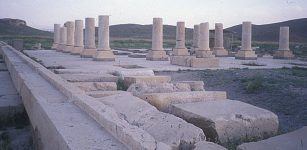 Pasargadae: Capital Of Achaemenid Empire Destroyed By Alexander The Great
Civilizations | Oct 24, 2016
Pasargadae: Capital Of Achaemenid Empire Destroyed By Alexander The Great
Civilizations | Oct 24, 2016 -
 Unexplained Mystery Of The Untraceable Stone-Throwers – Strangeness In Australia And New Zealand – Part 2
Featured Stories | Nov 13, 2019
Unexplained Mystery Of The Untraceable Stone-Throwers – Strangeness In Australia And New Zealand – Part 2
Featured Stories | Nov 13, 2019

